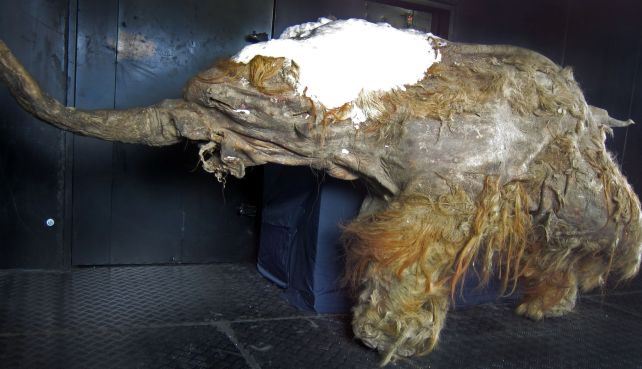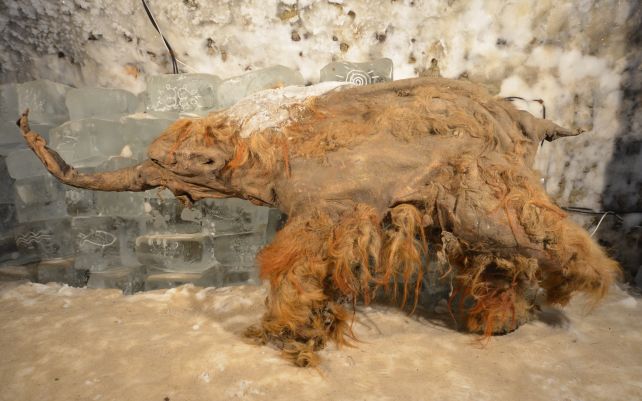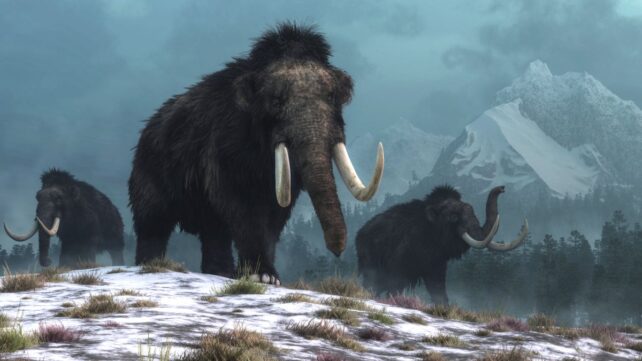A woolly mammoth that lived and died nearly 40,000 years ago has given us a spectacular scientific first, millennia later.
From the skin and muscle of a mammoth (Mammuthus primigenius) named Yuka, whose remains were exquisitely preserved in the Siberian permafrost, a team of scientists has sequenced ancient RNA nearly three times older than the previous record-holder for ancient RNA – a 14,300-year-old wolf puppy.
This is something scientists were unsure was possible. RNA has a notoriously rapid decay rate compared to DNA. The fact that fragments of it were able to survive well enough for sequencing for tens of thousands of years is nothing short of wondrous.
Related: Scientists Have Sequenced Mammoth DNA That's Over a Million Years Old

What's even more exciting is that RNA's role in gene activation offered a window into a woolly mammoth's living biology through which scientists had never peered before.
"With RNA, we can obtain direct evidence of which genes are 'turned on', offering a glimpse into the final moments of life of a mammoth that walked the Earth during the last Ice Age," says genomicist Emilio Mármol-Sánchez, the paper's first author, who was based at Stockholm University in Sweden during the study.
"This is information that cannot be obtained from DNA alone."
In recent years, tremendous strides have been made in recovering and sequencing ancient DNA, with the oldest sequenced to date coming from frozen sediments in Greenland around 2 million years old. But RNA has a much shorter lifespan than DNA, making its preservation in ancient remains far less likely.
Think of DNA like a cookbook, and the recipes it contains are your genes. The role of the RNA is to carry out the functions of those genes – copying a single recipe, taking it where it needs to go, and helping cook it.
After this, the RNA becomes obsolete and must decay quickly to avoid an accumulation of useless molecules just hanging around doing nothing.

While ancient DNA can tell us what genes an organism had in its body, RNA can tell us which genes it was actively using just before it died – information that cannot be obtained any other way. It's a potential way of seeing how an organism lived its life.
The paper's senior author, evolutionary geneticist Love Dalén of the Centre for Palaeogenetics in Sweden, and the team of researchers believed that some of the exceptionally well-preserved mammoth remains recovered from the Siberian permafrost recently may contain fragments of ancient RNA.
They collected tissue samples from 10 such mammoths, sequenced them, and matched what they found against human and elephant genomes. Not all the mammoth samples contained detectable RNA. In fact, just 3 of the 10 contained reliable sources of ancient RNA – and for two of those, the fragments were not detailed enough for analysis.

Only one of the mammoths met that threshold: Yuka, a mummified male woolly mammoth calf that lived and died 39,000 years ago, discovered in the Siberian permafrost in 2010. Although the RNA the researchers recovered from his tissue was still fragmentary, there was enough there to piece together what Yuka's body was doing when he died.
They found RNA associated with muscle contraction and metabolic regulation under stress – perhaps not surprising, as a 2021 paper based on damage to the remains proposed that Yuka was attacked by cave lions and fled to a mudhole, where he died.
The muscle tissue also contained RNA, including microRNA, that does not encode for proteins. Some of these molecules had rare mutations that confirmed their mammoth origin.
"RNAs that do not encode for proteins, such as microRNAs, were among the most exciting findings we got," says molecular bioscientist Marc Friedländer of Stockholm University and SciLifeLab.
"The muscle-specific microRNAs we found in mammoth tissues are direct evidence of gene regulation happening in real time in ancient times. It is the first time something like this has been achieved."
Although the work was finicky and indicates the survival of RNA in ancient remains is rare, knowing that it's able to happen at all is a huge leap forward. Yuka may even offer a blueprint for the ideal conditions of ancient RNA preservation, helping scientists narrow down where to focus their efforts in future research.
"Our results demonstrate that RNA molecules can survive much longer than previously thought," Dalén says. "This means that we will not only be able to study which genes are 'turned on' in different extinct animals, but it will also be possible to sequence RNA viruses, such as influenza and coronaviruses, preserved in Ice Age remains."
The research has been published in Cell.

